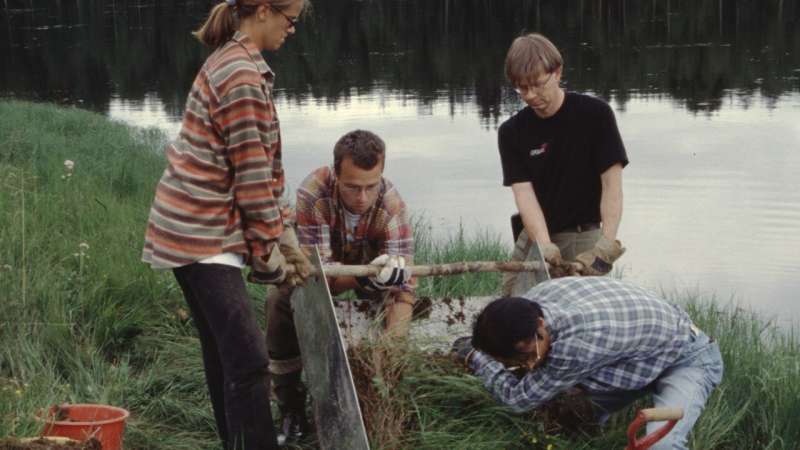Plant communities do not take the same route from A to B as from B to A

Ecologists at Umeå University in Sweden have discovered that plant communities follow different trajectories when they adapt to dryer conditions than when they adapt to more frequently flooded conditions. Further, in two side studies in the same experiment they found that flooding history of the vegetation alter the response of germinating seeds and of litter decomposition to the current conditions.
"This is one of the most direct experimental evidence to date for alternative transient states", says Judith Sarneel, researcher at the Department of Ecology and Environmental Sciences at Umeå University, and one of the researchers behind the study.
Climate change will have large consequences for flooding frequencies in rivers and will both increase flooding and drought across the world. When flooding regimes change, conditions for plants that grow on the riverbanks change, and this will kill plants that cannot deal with flooding while it will favour better-adapted species.
On riverbanks, there is a strict zonation with species adapted to wet conditions at lower elevations and species adapted to dry conditions at high elevations that are only flooded once every 5-10 years. How fast change different plant communities in this zone when it gets dryer or wetter, Sarneel and her colleagues wondered.
Therefore, in 2000, Judith Sarneel and colleagues started a large experiment where they dug out and transplanted 96 large turfs (almost 1m2) between three elevations in a floodplain close to Strycksele (Vindel River, Northern Sweden). Turfs from high elevations ended up at middle and low elevations simulating increased flooding while turfs that moved upward in elevation simulated increased drought. In 2014, they repeated the experiment at a smaller scale and evaluated the long and the short-term effects of changed flooding regimes on seed germination and litter decomposition.
Almost two decades after the transplantation, Sarneel and her colleagues found that some species from the original vegetation were still present in transplanted turfs. She observed that turfs moved from high to low elevations, resembled vegetation from middle elevation halfway their trajectory. Interestingly, turfs that moved in the other direction (from low to high elevation), started to resemble their target vegetation much slower and followed a different transition trajectory compared to the turfs that moved from high to low elevation. Further, it even looked like that during the last five years of the study, the vegetation of some transplanted turfs were not becoming more similar to the vegetation of the elevation that they were transplanted to.
"This could mean that they developed into an alternative stable state, which would be almost the first documentation of this phenomenon in plant science", says Judith Sarneel.
Germination was enhanced shortly after transplantation to dryer conditions, and decomposition was also higher directly after turf transplantation. These results provide rare examples of alternative transient trajectories, stable states and so-called legacy effects under field conditions, which is an important step towards understanding their drivers and their frequency in a changing world.
The results are published in Global Change Biology, Journal of Vegetation Science and Plant and Soil.
More information: Judith M. Sarneel et al. Alternative transient states and slow plant community responses after changed flooding regimes, Global Change Biology (2019). DOI: 10.1111/gcb.14569
J. M. Judith Sarneel et al. Legacy effects of altered flooding regimes on decomposition in a boreal floodplain, Plant and Soil (2017). DOI: 10.1007/s11104-017-3382-y
Judith M. Sarneel et al. Local flooding history affects plant recruitment in riparian zones, Journal of Vegetation Science (2019). DOI: 10.1111/jvs.12731
Journal information: Global Change Biology
Provided by Umea University




















